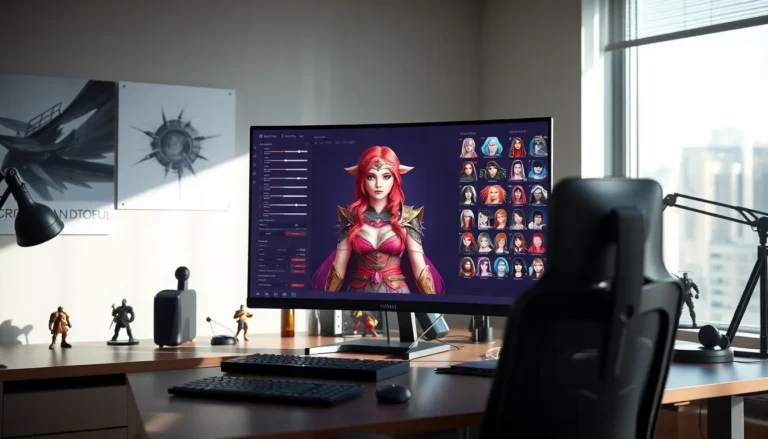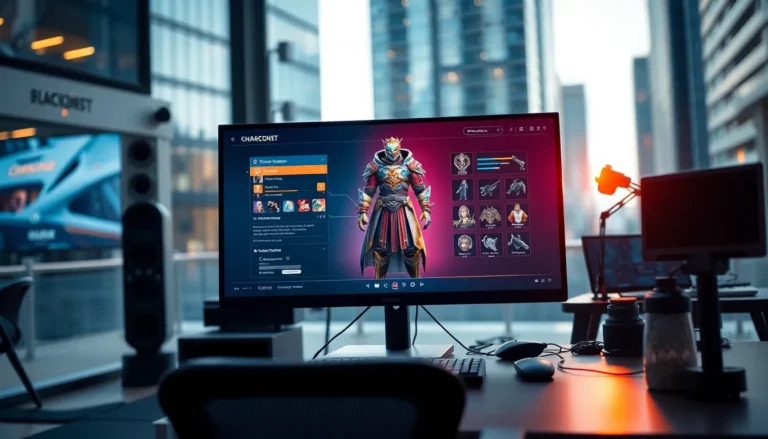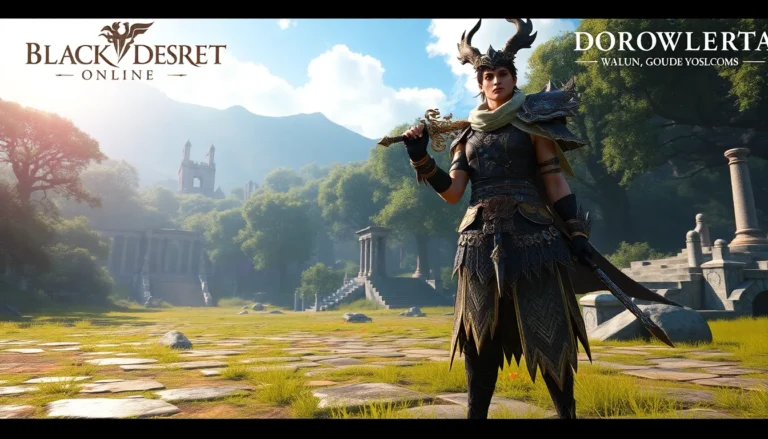Table of Contents
ToggleEsports has taken the world by storm, but what if players could dive into their favorite games like never before? Enter Esports VR, where reality meets virtual mayhem. Imagine battling your friends in a fully immersive environment where you can dodge virtual bullets and throw virtual shade—all while wearing a headset that makes you look like a futuristic gladiator.
Overview of Esports VR
Esports VR transforms gaming by delivering immersive experiences that go beyond traditional platforms. Players enter virtual worlds where they interact with environments and opponents, enhancing engagement. Spectators also benefit, as they can experience the action from different perspectives, feeling as if they are part of the game.
Virtual reality technology enhances the competitive landscape of esports by introducing innovative mechanics. Games like “Beat Saber” and “Echo Arena” showcase how VR integrations challenge players’ skills within dynamic settings. Competitive players showcase their abilities through quick reflexes and strategic movements unique to VR environments.
Key platforms support Esports VR, including Oculus Rift, HTC Vive, and PlayStation VR. Each system offers distinct experiences, catering to different preferences and budgets. With esports’ rapid growth, the integration of VR attracts new audiences, expanding viewership and participation.
A variety of tournaments now incorporate VR gaming, illustrating its rising prominence. Organizations like the VR League and World Championship Series host events, drawing enthusiastic crowds both online and offline. Competitive formats adapt to suit VR’s features, requiring new strategies tailored to virtual gameplay.
Technological advancements continue to drive Esports VR forward. Improved headsets, motion tracking, and haptic feedback enhance realism and responsiveness, creating more engaging environments for players and audiences. This rapid evolution suggests a bright future for VR in competitive gaming, promising even more innovative experiences ahead.
Key Features of Esports VR

Esports VR offers unique features that elevate the gaming experience beyond traditional formats. Immersion and interaction define this innovative realm of gaming.
Immersive Experience
Immersive experience in Esports VR creates a sense of presence that traditional gaming can’t match. Players can physically move within virtual spaces, feeling as though they are part of the action. This engagement enhances focus and investment in gameplay. Games use high-definition graphics and realistic soundscapes, drawing players into rich environments. Dynamic scenarios can unfold based on player actions, further deepening the immersion. Features like gaze tracking and spatial awareness improve interaction with game elements. Competitions even transport spectators into the game, offering viewpoints that strengthen their connection to the action.
Enhanced Interaction
Enhanced interaction signifies a shift in how players communicate and collaborate. Players engage in teamwork through voice and gesture control, allowing for spontaneous strategies. Real-time feedback fosters quick responses and decision-making in fast-paced scenarios. Many games also utilize avatars that represent players visually, adding a personal touch to interactions. These avatars enable non-verbal communication through gestures and movement, which enhances teamwork. New mechanics like environment manipulation encourage creative problem-solving and tactical gameplay. Players can also form in-game alliances that shift dynamically, altering the competitive landscape considerably.
Popular Esports VR Games
Esports VR showcases a variety of games that emphasize immersive and competitive gameplay. Each title offers unique features that enhance the overall experience for players and spectators alike.
Game 1: Beat Saber
Beat Saber stands out as a rhythm-based VR game where players slash blocks representing musical beats. Players wield virtual sabers to hit targets and navigate through a visually stunning environment. Competitive players earn high scores by achieving accuracy and timing. Beat Saber has hosted numerous tournaments, drawing dedicated players seeking to showcase their skills. Its combination of music, physical movement, and visual feedback keeps players engaged over extended sessions.
Game 2: Echo Arena
Echo Arena combines fast-paced movement with team-based strategy, requiring players to navigate a zero-gravity environment. Teams compete to score points by throwing a disc into the opposing team’s goal. Players utilize various maneuvers to outsmart opponents and execute complex strategies. Echo Arena emphasizes teamwork and coordination, proving to be a thrilling experience for both players and spectators. The game has built a strong competitive scene, with various leagues and tournaments fostering community engagement and participation.
The Impact of Esports VR on the Gaming Community
Esports VR significantly reshapes the gaming landscape, influencing both players and spectators alike.
Player Engagement
Players find themselves fully immersed in virtual environments, where physical movement enhances their connection to the game. Interaction becomes fluid; they can dodge, jump, and collaborate with teammates in ways previously impossible. The incorporation of high-definition graphics elevates the experience, making every detail come alive. Players also leverage unique mechanics, which challenge their strategic thinking and coordination. Community engagement grows as players participate in tournaments specifically designed for VR experiences, creating a vibrant competitive atmosphere.
Spectator Experience
Spectators enjoy enhanced viewing options, feeling as if they are part of the action right alongside players. Innovative camera angles offer dynamic perspectives, showcasing intense moments of gameplay. Many platforms facilitate interactive features, allowing viewers to engage with the content on a deeper level. Virtual arenas host live audiences, fostering a sense of community among fans. This immersive experience brings spectators closer to the action, attracting new viewers who appreciate the thrill of competitive Esports VR events.
Future Trends in Esports VR
Esports VR is poised for significant growth as technology advances. Improved hardware contributes to more realistic gaming experiences. Players can expect next-generation headsets featuring higher resolutions and wider fields of view.
Motion tracking systems are evolving, allowing more precise player movements. These advancements enhance gameplay, making interactions feel seamless and intuitive. Gamers engage more fully when virtual environments accurately respond to their actions.
Increased competition is likely, with more tournaments showcasing VR titles. Organizations such as the VR League anticipate a rise in event participation. A diverse range of games will emerge, catering to varying play styles and preferences.
Social interaction within VR environments is expanding. Players will connect with peers through virtual meetups and collaborative gameplay, fostering community engagement. Communication tools are becoming more sophisticated, enabling better teamwork and strategy sharing.
Cross-platform play is also on the horizon, bridging traditional gamers and VR enthusiasts. This integration can expand the overall player base, making esports more accessible. Spectators benefit from enhanced viewing experiences that allow them to see the action from multiple angles.
In coming years, AI will likely play a role in personalizing gameplay experiences. Customized challenges and adaptive opponents can keep players engaged and entertained. This focus on tailored experiences will encourage players to invest more time in competitive VR gaming.
Ultimately, the future of esports VR looks bright. With continuous technological advancements and innovations, the landscape is set for thrilling developments. Players and audiences alike can anticipate energizing experiences that transcend traditional gaming conventions.
Esports VR is transforming the gaming landscape in remarkable ways. Its ability to immerse players in dynamic environments while fostering social interaction sets it apart from traditional gaming experiences. As technology continues to evolve, the potential for more engaging and competitive gameplay becomes limitless.
With major platforms pushing the boundaries of virtual reality, the integration of VR into esports is set to attract an even broader audience. The future promises exciting advancements that will not only enhance gameplay but also redefine how players and spectators connect within the gaming community. Esports VR is undoubtedly paving the way for a new era in interactive entertainment.








